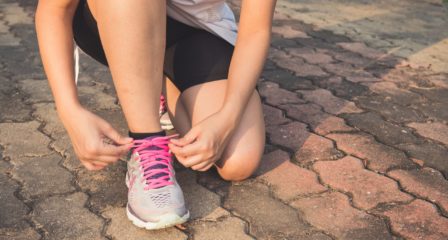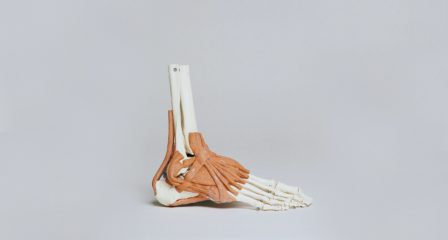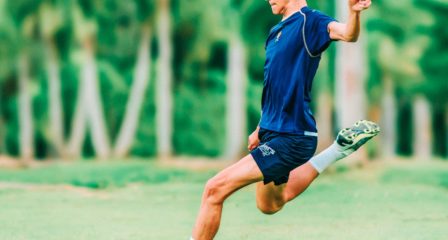Blog written by physiotherapist, Lachie Cooper.
With the Cadel Evans Great Ocean Road Race just around the corner, we thought it the perfect time to give a run down on overuse injuries in cycling.
Cycling already sees high participation rates and its popularity is continuing to rise. With many cyclists (& triathletes) clocking up hours a week in the saddle, overuse injuries can be frustrating and lead to a reduced tolerance to training load.
Overuse injuries in cycling are primarily related to:
- Repetitive Loading
- Sustained Postures
Common sites of overuse injury in cycling
Knee
The knee is the most common site of overuse injury amongst cyclists at all levels. Symptoms are most commonly related to the patella-femoral joint, however there are other potential local tissue contributors including ITB, patella fat pad, infrapatellar branch of saphenous nerve, pre-patella bursa etc.
Possible contributing factors include (but are not limited to):
- Bike Set Up: Saddle height
- Activation & recruitment of gluteal muscles
- Inwards position &/or movement of knee joint during pedal stroke
Lumbar Spine
Low back symptoms in cyclists are commonly provoked by sustained flexion positions. It has been shown that cyclists with low back pain adopt a more flexed position than those without.
Possible contributing factors include (but are not limited to):
- Bike Set Up: Saddle heights; Handlebar height; Overall reach
- Pelvic position
- Strength & endurance of lumbopelvic stabilisers
- Activation & recruitment of gluteal muscles.
Neck & Shoulders
Neck & shoulder pain is most likely provoked by the sustained postures required whilst cycling. The position of head, neck and shoulders often results in ischaemic pain due to reduced blood flow. Depending on riding position, tissues may also impinge resulting in pain and discomfort.
Possible contributing factors include (but are not limited to):
- Bike Set Up: Handlebar height / angle; Overall reach
- Over-gripping
- Elbow position
- Strength & endurance of cervical and shoulder girdle muscles
Wrist/hand
Ulnar neuropathy is a common issue found in many cyclists. It is characterised by the gradual onset of numbness, tingling and pain on the outside of the hand due to compression of the ulnar nerve when holding the handlebars.
Possible contributing factors include (but are not limited to):
- Vibration of the handlebars
- Over-gripping
- Bike set up: Handlebar height, overall reach
Contributing Factors to Cycling Overuse Injuries
There are a number of factors that can contribute to overuse injury, below is an outline of those factors commonly linked with overuse injuries in cyclists.
Load management
Like with any injury, if the load we place on our tissues is greater than they are capable of withstanding, risk of injury increases significantly. Our tissues have great capacity to adapt to load and we can increase our ability to withstand greater load with appropriate training. Our bodies need enough load to encourage our tissues to adapt and improve, but load beyond their capability becomes a risk.
Training load management
Overuse injuries are often looked at in terms of load management. They have often been linked to an imbalance between acute loading (1-7 days) & chronic loading (4-8 weeks). Chronic load builds our ability to manage and cope with acute load.
Biomechanics / Kinetic Chain
Cycling is a closed chain activity (foot is fixed) and therefore the efficiency of the whole kinetic chain is an important consideration. A change or variation in the load or position of one joint will affect the function of the whole leg.
Any non-optimal variation in kinetic chain biomechanics can lead to adverse loading of tissues and joints.
Pedal Technique
Pedalling technique is important. Depending on the way you pedal, different demands will be placed on different tissues. Pedalling technique should encourage contribution from gluteals; quads; hamstring and calf and ensure load is distributed appropriately.
Bike Set Up
Recent research looking into bike set up and its relationship to injury in broad populations has not been able to demonstrate any strong relationship between the two. As such, we need to take a nuanced approach if we are looking to modify a cyclist’s bike set up, taking into consideration how their tissues are being loaded, injury presentation or history and their anatomy.
Bike fit is an art of compromise and needs to be tailored towards the individual. It requires the bike to fit the cyclist and cyclist to fit the bike. It is never perfect; it is about making the most appropriate and safest compromise.
Having adequate strength & range of motion to adopt and maintain efficient positions is important. Strength training can absolutely assist with this. Not only can it improve performance, but can be specific to the position and movement patterns required when cycling.
Clinicians involved in injury management should ideally communicate closely with those responsible for bike fit to ensure that any changes made will shift load away from injured tissue without significant compromise to the health of unaffected tissue.



